Welcome to our blog on Hampshire Pig Facts! If you’re curious about the origin, size, physical characteristics, pros, and cons of Hampshire pigs, you’ve come to the right place. Hampshire pigs are an intriguing breed with a rich history and unique traits.
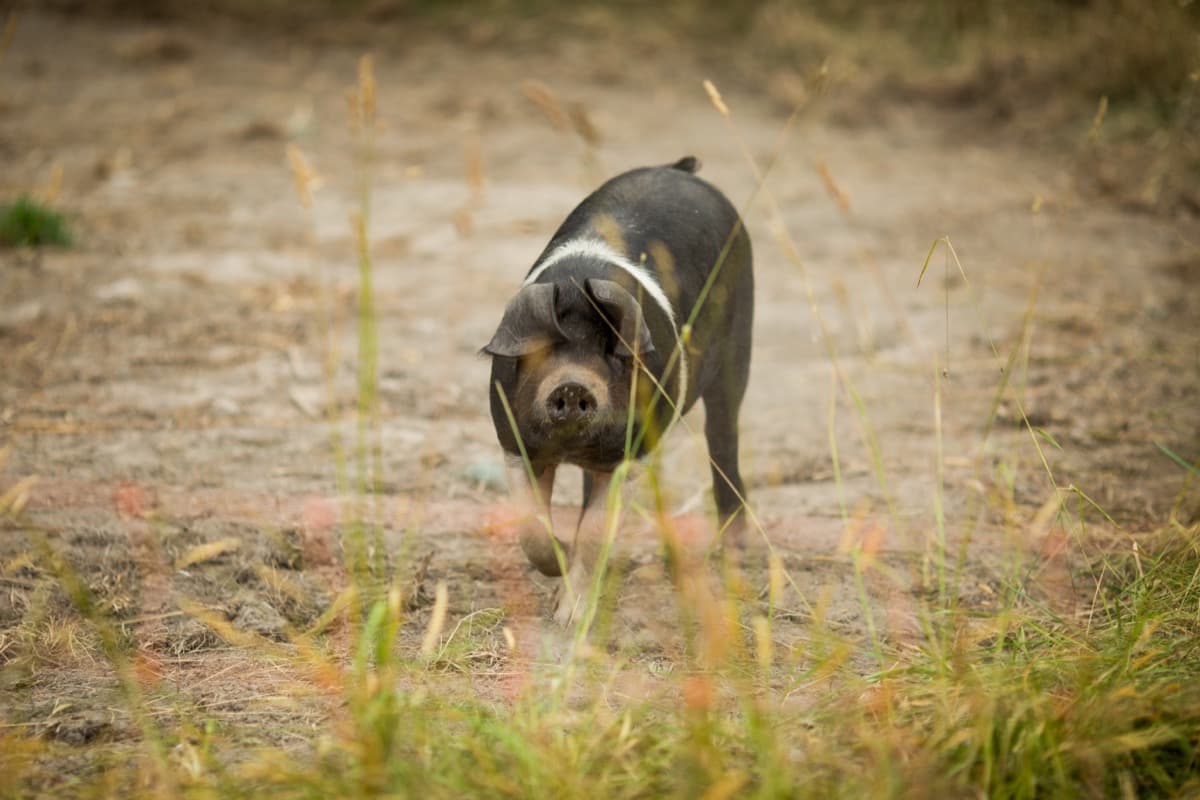
In this article, we will delve into their origin, discuss their size and weight, explore their physical characteristics, and examine the advantages and disadvantages of raising them. Get ready to discover the fascinating features that make Hampshire pigs stand out in farming and learn why farmers and pork enthusiasts highly value them.
Hampshire Pig Facts
Introduction to Hampshire Pigs
The Hampshire pig is a popular breed known for its distinct physical features, such as a black body, erect ears, and a white band around the middle covering the front legs. In the United States, it is the fourth most-recorded breed raised as livestock, and it is believed to be the oldest American hog breed. The Hampshire pig is thought to have originated from the English Breed found in northern England and Scotland. Importations of this breed to America took place between 1827 and 1839, possibly from Hampshire in England.
Interestingly, the residents of Hampshire have earned the nickname “Hampshire Hogs,” which dates back to at least the 1790s. Hampshire hogs are well-regarded for their strong musculature, rapid growth, and high-quality carcass as meat animals. They are also known for their excellent maternal instincts, with the sows displaying remarkable longevity. While Hampshire pigs may grow slower than some crossbred varieties, they exhibit a faster growth rate than American Yorkshires. Additionally, they are recognized for their docile and good-tempered nature.
In case you missed it: Large Black Pig Facts: Origin, Size, Physical Characteristics, Pros, and Cons
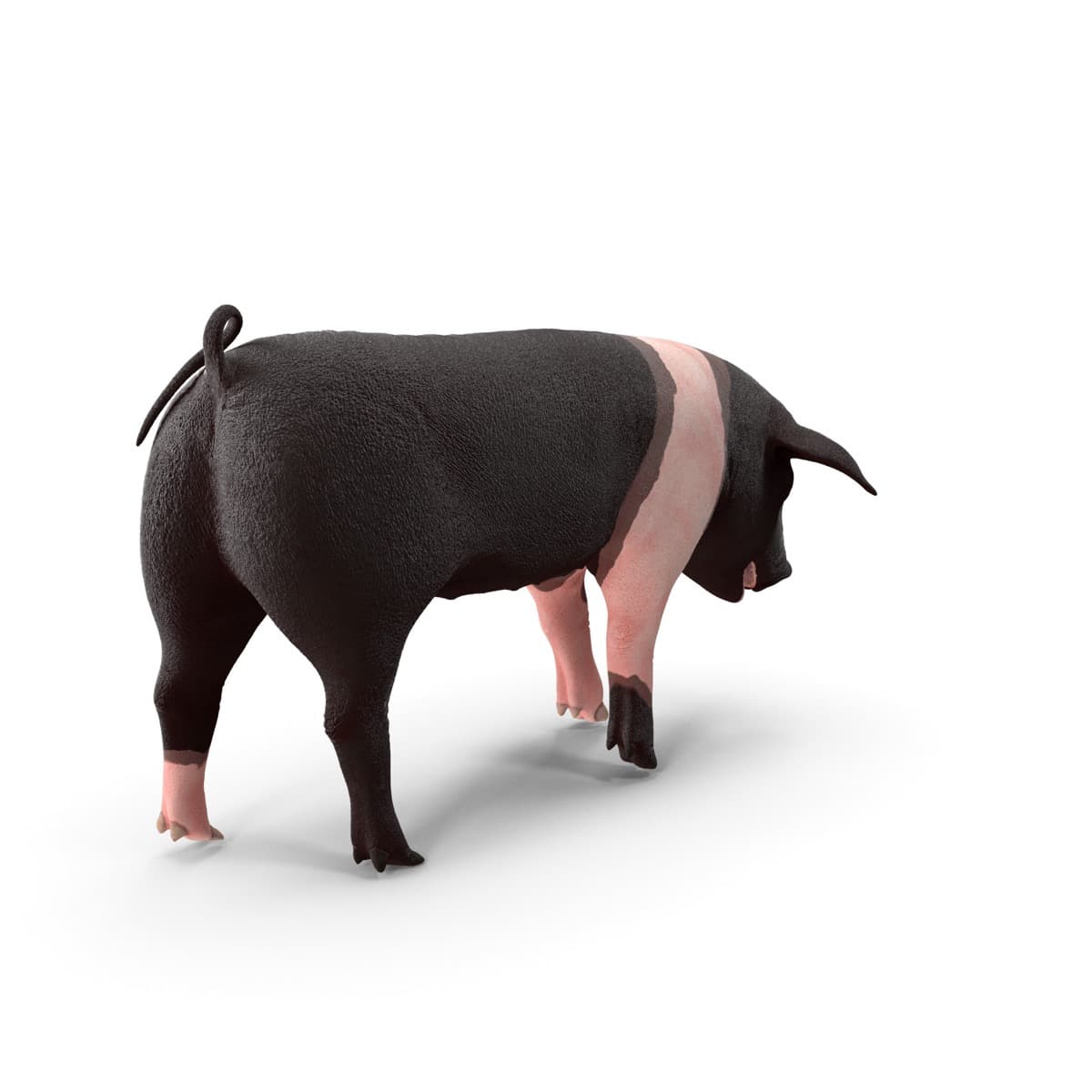
Hampshire Pig Origin and History
The Hampshire pig breed originated in Northern England and Scotland during the 18th century. Initially, they were less popular due to their larger size than other breeds. However, by the 19th century, Hampshire pigs gained significant popularity when breeders started butchering them at a younger age. In the 1830s, these pigs were reportedly introduced to the United States by a man named McKay.
Kentucky became the breeding ground where Hampshire pigs thrived, earning them the nickname “thin rinds” due to their relatively thinner skin than other popular American breeds. Local breeders in Kentucky made efforts to preserve the purity of Hampshire pigs during breeding. Eventually, breeders from Ohio and other Midwestern states also began importing Hampshire pigs.
In the 1960s, the exportation of Hampshire pigs expanded worldwide, making them accessible in various climates and environments. Today, many Hampshire pigs have been crossbred, leading to the development of the Wessex Saddleback Pig. This breed resembles Hampshire pigs but is distinguished by floppy ears and a more domesticated temperament, in contrast to the original breed’s erect ears and foraging tendencies.
Hampshire Pig Size and Weight
Hampshire pigs are known for being rapid growers with well-developed muscles, producing good carcass quality. When it comes to size, they fall into the medium category. Adult Hampshire boars typically weigh around 300 kilograms (660 pounds), while adult Hampshire sows weigh approximately 250 kilograms (550 pounds). Along with their impressive size, Hampshire pigs also possess a good temperament, making them a favorable choice for pig farming and breeding.
Physical Characteristics of Hampshire Pigs
- Head: Hampshire pigs have medium-sized head with small eyes. Although their eyesight is not excellent, a wide forehead and good eye spacing indicate a healthy pig.
- Ears: Hampshire pigs have upright, erect ears, unlike most domestic pigs with floppy ears.
- Teeth: Hampshire pigs possess strong jaws and a solid bite, although their teeth are not very sharp. Caution should be exercised around their mouths, and trimming piglet teeth may be considered.
- Tail: Hampshire pigs have short, curled tail that touches their lower back. The tail rests high on the hindquarters, which should have a long and level appearance.
- Tusks: Both male and female Hampshire pigs have tusks, with the main difference being the potential length. Checking the size of the tusks can help determine the pig’s gender.
- Nails and Hooves: Like other pig breeds, Hampshire pigs have nails and hooves that require regular attention, depending on their terrain. Enclosures with solid surfaces and grass can extend the time between trimmings.
In case you missed it: Wessex Pig Facts: Origin, Size, Physical Characteristics, Pros, and Cons
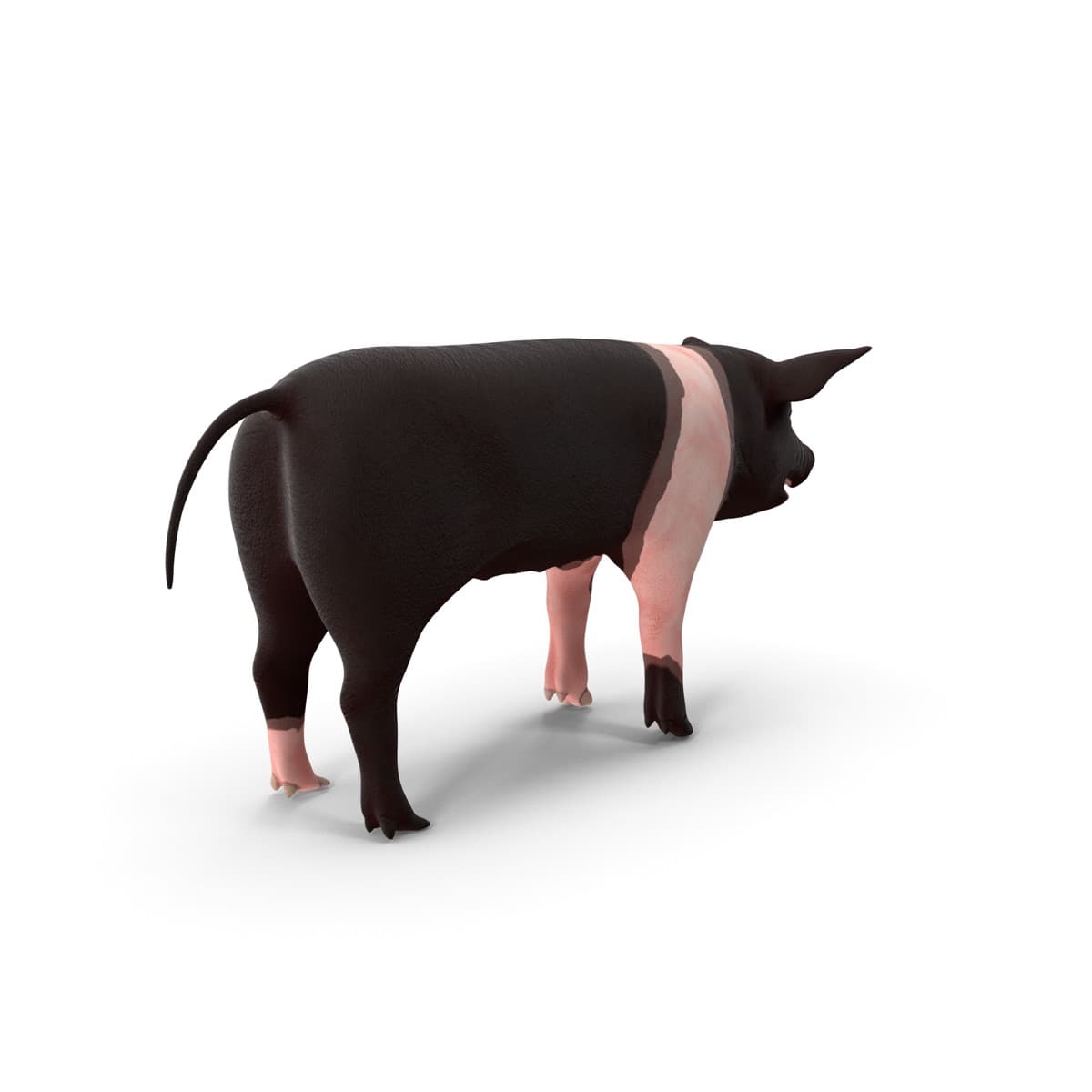
- Snout: Hampshire pigs have long snouts with small or medium-sized upturned noses. Their sense of smell is highly developed to compensate for their less effective eyesight.
- Color: Hampshire pigs have an all-black body with a white or cream-colored belt covering the upper chest and front legs. This distinctive coloring has earned them the nickname “the hogs with the white belt.”
- Weight: Hampshire pigs are larger than most domestic pigs in the United States, with males reaching weights up to 660 pounds and females up to 550 pounds. Their muscular bodies contribute to their lean meat quality, and many farmers choose to butcher them before they become too large.
- Breeding Capacity: Female Hampshire sows can have up to two litters per year, comprising 7 to 15 piglets. Proper spacing and 12 pronounced teats are important indicators of breeding capacity.
- Growth Rate: Hampshire piglets reach sexual maturity around seven months old but are advised not to be bred until they reach 12 months.
Advantages of Raising Hampshire Pigs
- High-Quality Meat: Hampshire pigs are known for producing excellent meat that customers highly sought after. Raising Hampshire pigs can be profitable if you have the time and space.
- Robust and Low-Maintenance: Hampshire pigs are resilient animals requiring less maintenance than other breeds. They suit beginners and those with limited land or climate control options.
- High Breeding Capacity: Female Hampshire pigs can birth 30 healthy piglets annually. Their reputation for producing healthy offspring ensures a high yield, allowing you to increase your pig population and financial return quickly.
- Docile, Friendly, and Clean: Hampshire pigs have a calm and gentle temperament, making them less likely to attack humans or other pigs. This reduces the stress associated with raising livestock. Additionally, it is possible to develop a meaningful bond with Hampshire pigs.
Disadvantages of Raising Hampshire Pigs
- Love for Exploration: Hampshire pigs’ instinct to explore can lead to damage if they dig up their pen or aren’t properly fenced. Their foraging tendencies can harm the land and man-made materials while searching for food.
- Space Requirements: Hampshire pigs need enough space to roam and thrive. Only overestimating their space needs can take time and effort, considering their size, breeding potential, and rapid growth rate.
- Rarity: Finding Hampshire pigs for breeding can be difficult and expensive. However, entering the market as a Hampshire pig breeder can be lucrative once established.
- Water Consumption: Hampshire pigs require substantial water, increasing workload and water bills. Proper water supply and management are vital for their well-being.
Unique Features of Hampshire Pig Breed
- Lifespan: Hampshire pigs can live up to 12 years, and with proper care, including a nutritious diet, affection, and entertainment, their lifespan can be extended.
- Popularity: Hampshire pigs rank fourth among the most bred pig breeds in the United States. This is attributed to their desirable qualities, such as delicious and lean meat.
- Price Range: A male Hampshire pig can range from $300 to $600, depending on factors like age, bloodline, and the source of purchase. Female pigs under 12 months, known as gilts, can cost between $250 and $400.
- Exportation: Since the 1960s, the United States has become one of the leading exporters of Hampshire pigs worldwide, a little over a century after their introduction.
- Clean Living Environment: Unlike many other pig breeds, Hampshires prefer a clean living environment, showing their preference for cleanliness.
- Breed Size: Hampshire pigs are considered a medium-sized breed, with boars weighing around 300 kg and sows around 250 kg.
- Climate Tolerance: Hampshire pigs can thrive in various climates, adapting well to environmental conditions.
- Color: Hampshire pigs have a distinctive color pattern of black and white.
- Rarity: Hampshire pigs are readily available for breeding and farming purposes.
- Country/Place of Origin: Hampshire pigs originated in the United Kingdom.
In case you missed it: Kolbroek Pig Facts: Origin, Size, Physical Characteristics, Pros, and Cons
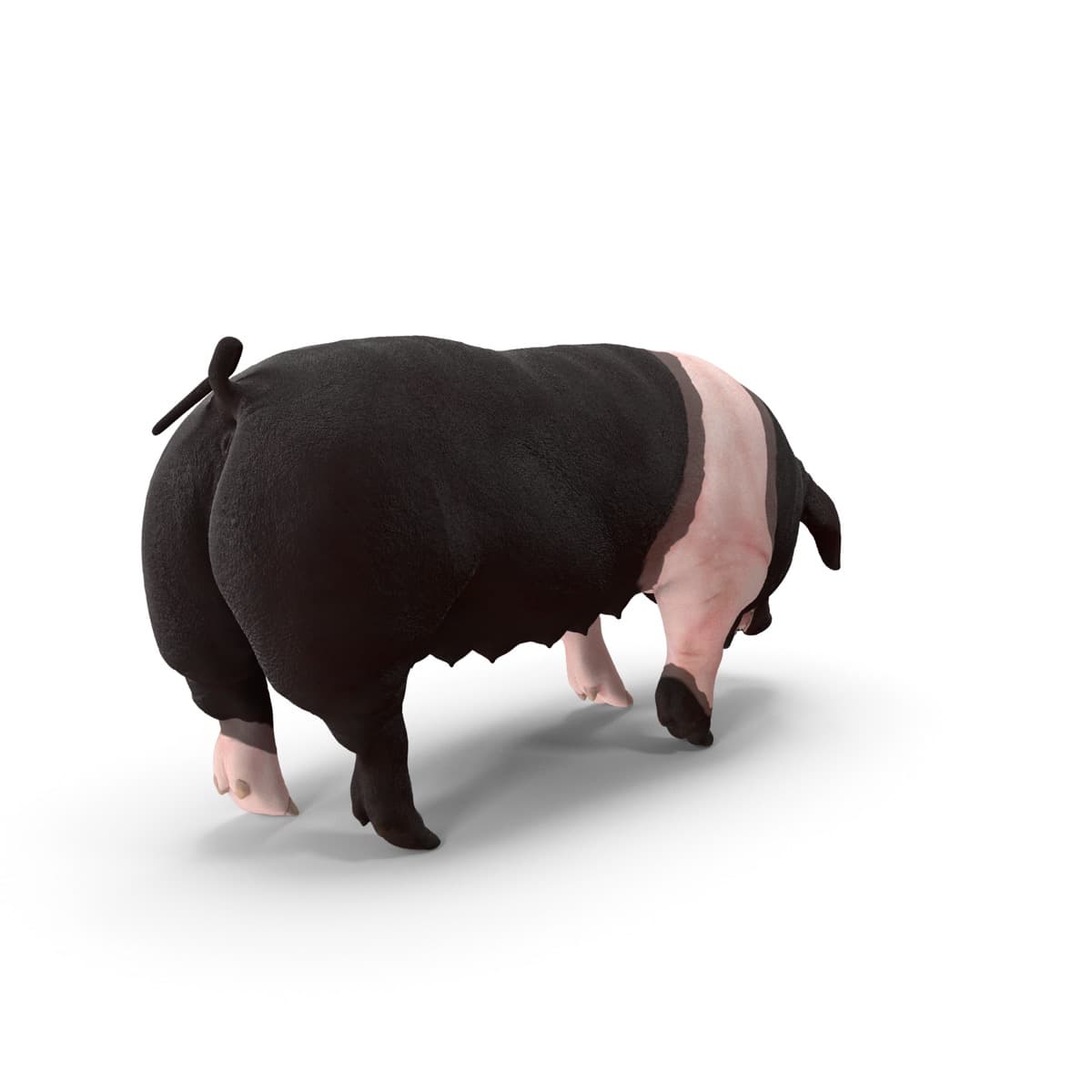
Hampshire Pig Breed Traits and Temperament
Hampshire pigs are intelligent and adaptable creatures with a good memory. Their alertness compensates for their poor eyesight, and they possess the ability to outsmart predators. Hampshires also display a range of emotions and form strong bonds with their caregivers when treated well.
They are generally calm and gentle, remaining vigilant against potential threats. However, as they age, especially in the case of males, they may exhibit increased aggression due to hormonal changes, health issues, or pain. Hampshire pigs are obedient and responsive to their owners, emphasizing the importance of maintaining a calm environment.
Hampshire Pig Growth Rate and Maturity
- The growth rate of Hampshire pigs is relatively rapid. Piglets typically reach sexual maturity by seven months old, but it is advisable to wait until they are 12 months old before breeding them. This allows for proper physical development and overall health.
- During their growth phase, Hampshire pigs require a balanced diet that provides essential nutrients for optimal growth. A well-balanced diet promotes healthy weight gain and muscular development.
- Their physical and reproductive readiness characterizes maturity in Hampshire pigs. At maturity, they reach their full size and weight potential. Male Hampshire pigs, known as boars, can weigh up to 300 kg (660 pounds), while female Hampshire pigs, called sows, can weigh up to 250 kg (550 pounds).
Hampshire Pig Meat Quality and Flavor
The meat of Hampshire pigs is highly regarded for its excellent quality and flavor. Hampshire pigs are known for their well-developed musculature, contributing to their meat’s lean and tender nature. The meat is marbled with a balanced fat distribution, enhancing its juiciness and flavor. Hampshire pig meat is often described as succulent, flavorful, and rich in taste. Due to their rapid growth rate and proper breeding practices, Hampshire pigs produce high-quality meat.
In case you missed it: Tamworth Pig Facts: Origin, Size, Physical Characteristics, Pros, and Cons
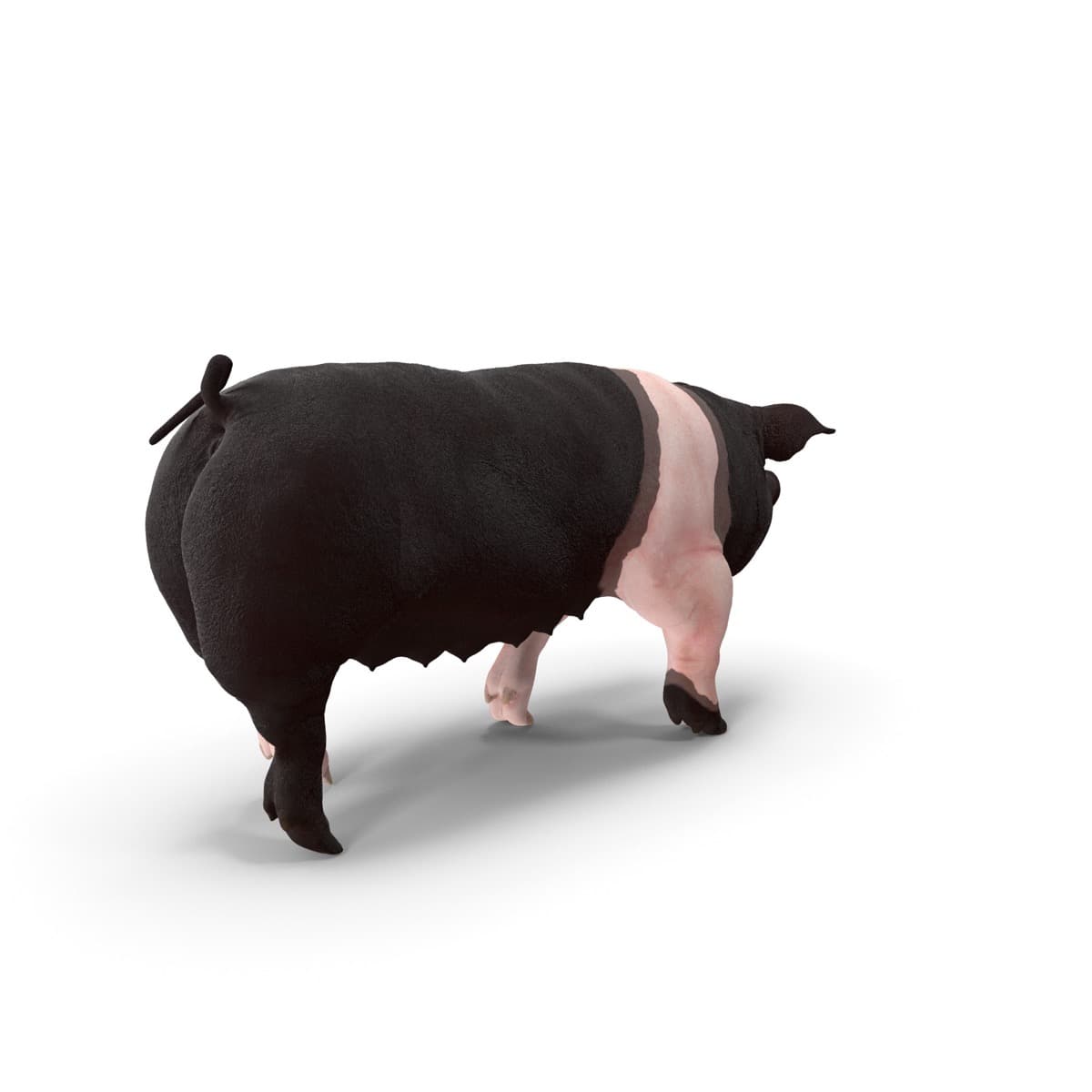
Hampshire Pig Farming Housing, Care, and Feeding
- Housing: A well-designed housing system is crucial for Hampshire pig farming, providing comfort and protection from extreme weather. It should have good ventilation, clean air, and sufficient light. Separate rooms for breeding boars and pregnant and nursing sows are recommended.
- Feeding: Hampshire pigs require high-quality, nutritious food for optimal growth and health. Ready-made commercial pig food is available, but a cost-effective diet can be created using ingredients like oats, grains, maize, wheat, rice, and sorghum. Clean and fresh water should be available at all times.
- Breeding: Hampshire pigs are excellent breeders, similar to other domestic pig breeds. Sows have a 2 to 3 days heat, and a lactating sow can be bred again within 2 to 10 days after weaning. The gestation period is typically around 115 days.
- Caring: While Hampshire pigs are hardy, providing additional care is beneficial. Maintaining a hygienic environment prevents diseases. Feeding them nutritious food, offering clean water, and regular health monitoring contribute to their well-being.
Hampshire Pig Breeding and Reproduction
- Sexual Maturity: Hampshire pigs typically reach sexual maturity at around 6 to 8 months, although this can vary between individuals.
- Heat Period: The heat period, or estrus, in Hampshire sows lasts about 2 to 3 days. This is the period when they are receptive to mating.
- Breeding: Introducing the boar to the sow during her heat period is crucial for successful breeding. The boar should be of appropriate age, healthy, and chosen based on desired traits.
- Gestation Period: The gestation period for Hampshire pigs is approximately 114 to 116 days, with an average of 115 days. During this time, the sow undergoes pregnancy and prepares for the birth of piglets.
- Litter Size: Hampshire sows have the potential to produce a large litter, often ranging from 8 to 12 piglets. However, litter size can vary based on genetics, nutrition, and overall management.
- Farrowing: Farrowing refers to the process of giving birth to piglets. Hampshire sows should be provided with a clean and comfortable farrowing environment to ensure the sow and piglets’ well-being.
- Reproductive Management: Regular monitoring of breeding, pregnancy, and farrowing is important to detect any issues or complications early on. Proper nutrition, healthcare, and veterinary care support successful breeding and reproduction.
In case you missed it: Pietrain Pig Facts: Origin, Size, Physical Characteristics, Pros, and Cons
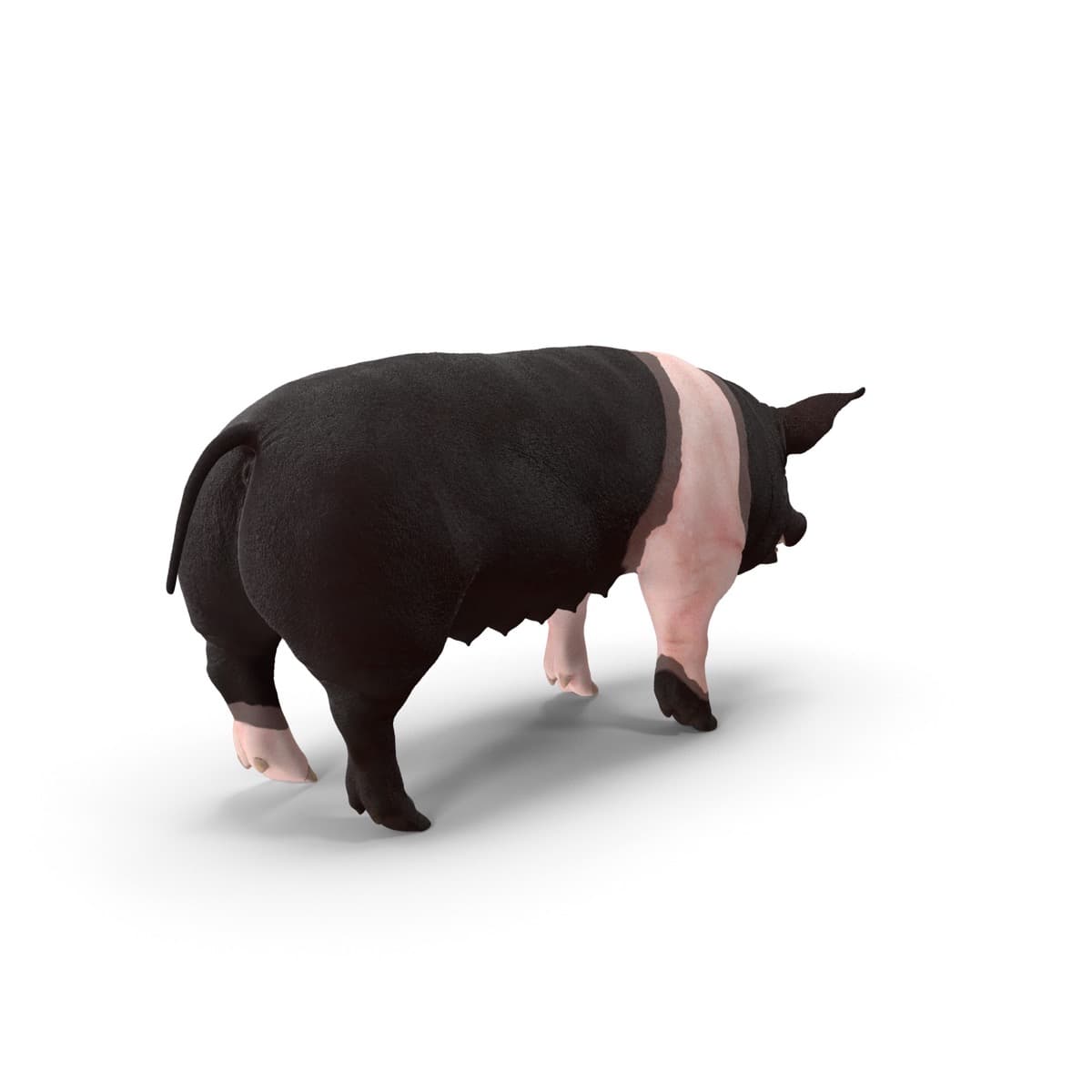
Conclusion
Hampshire pigs, originating from the United Kingdom, are medium-sized with black and white coloring. They possess desirable traits such as good meat quality and intelligence. However, they require ample space, may dig, and can be challenging to find for breeding purposes.
- Types of Pesticides Used in Agriculture: A Beginner’s Guide
- Economical Aquaculture: A Guide to Low-Budget Fish Farming
- 15 Common Planting Errors That Can Doom Your Fruit Trees
- How to Make Houseplants Bushy: Effective Tips and Ideas
- Innovative Strategies for Boosting Coconut Pollination and Yield
- Pollination Strategies for Maximum Pumpkin Yield
- The Complete Guide to Chicken Fattening: Strategies for Maximum Growth
- Natural Solutions for Tulip Problems: 100% Effective Remedies for Leaf and Bulb-Related Issues
- Revolutionizing Citrus Preservation: Towards a Healthier, Greener Future
- Natural Solutions for Peony Leaf and Flower Problems: 100% Effective Remedies
- Maximizing Profits with Avocado Contract Farming in India: A Comprehensive Guide
- Natural Solutions for Hydrangea Problems: 100% Effective Remedies for Leaf and Flowers
- The Ultimate Guide to Choosing the Perfect Foliage Friend: Bringing Life Indoors
- From Sunlight to Sustainability: 15 Ways to Use Solar Technology in Agriculture
- The Ultimate Guide to Dong Tao Chicken: Exploring from History to Raising
- The Eco-Friendly Makeover: How to Convert Your Unused Swimming Pool into a Fish Pond
- Mastering the Art of Delaware Chicken Farming: Essentials for Healthy Backyard Flocks
- 20 Best Homemade Fertilizers for Money Plant: DIY Recipes and Application Methods
- How to Craft a Comprehensive Free-Range Chicken Farming Business Plan
- Brighten Your Flock: Raising Easter Egger Chickens for Beauty and Bounty
- How to Optimize Your Poultry Egg Farm Business Plan with These Strategies
- Subsidy for Spirulina Cultivation: How Indian Government Schemes Encouraging Spirulina Farmers
- Ultimate Guide to Raising Dominique Chickens: Breeding, Feeding, Egg-Production, and Care
- Mastering the Art of Raising Jersey Giant Chickens: Care, Feeding, and More
- Ultimate Guide to Raising Legbar Chickens: Breeding, Farming Practices, Diet, Egg-Production
- How to Raise Welsummer Chickens: A Comprehensive Guide for Beginners
- How to Protect Indoor Plants in Winter: A Comprehensive Guide
- Ultimate Guide to Grow Bag Gardening: Tips, Tricks, and Planting Ideas for Urban Gardeners
- Guide to Lotus Cultivation: How to Propagate, Plant, Grow, Care, Cost, and Profit
- Agriculture Drone Subsidy Scheme: Government Kisan Subsidy, License, and How to Apply Online
- Ultimate Guide to Raising Araucana Chickens: Breed Profile, Farming Economics, Diet, and Care
- Bringing Hydroponics to Classroom: Importance, Benefits of Learning for School Students
- Ultimate Guide to Raising Polish Chickens: Breed Profile, Farming Economics, Diet, and Care
- Ultimate Guide to Raising Australorp Chickens: Profile, Farming Economics, Egg Production, Diet, and Care
- Silkie Chicken Farming: Raising Practices, Varieties, Egg Production, Diet, and Care
- Sussex Chicken Farming: Raising Practices, Varieties, Egg Production, Diet and Care
Thank you for your kind words! I’m glad you found the article informative and thought-provoking.